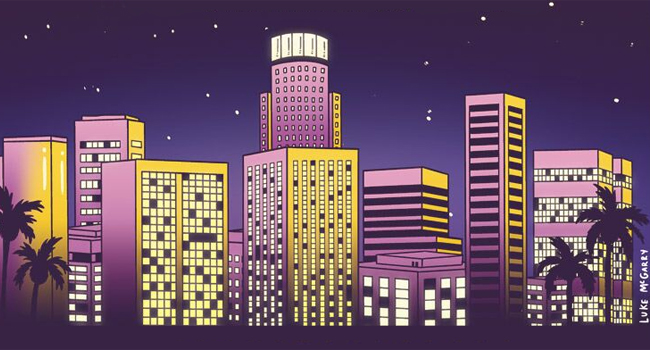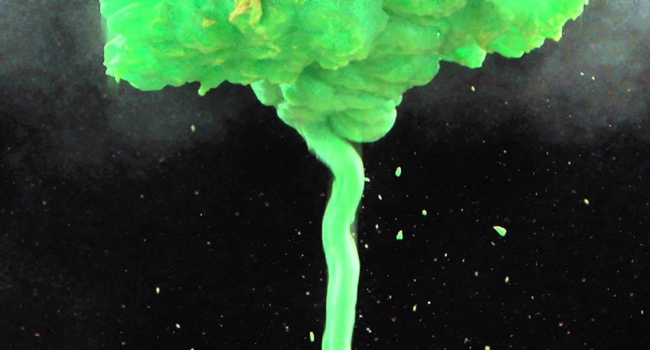10. The Kinks – Something Else By The Kinks (1967)
 From 1965-1969 The Kinks were said to be banned from appearing in the U.S.A. Officially they were “delisted” by The American Federations Of Musicians for non-compliance in paying union wages to the crew during an NBC TV broadcast, but the issue of Ray Davies’ slugging a mouthy union official and the wrath of disgruntled promoters who suffered the band’s dismal ticket sales probably bore more weight in this conspiracy. Regardless of the cause the result was clear. For four years America forgot about The Kinks.
From 1965-1969 The Kinks were said to be banned from appearing in the U.S.A. Officially they were “delisted” by The American Federations Of Musicians for non-compliance in paying union wages to the crew during an NBC TV broadcast, but the issue of Ray Davies’ slugging a mouthy union official and the wrath of disgruntled promoters who suffered the band’s dismal ticket sales probably bore more weight in this conspiracy. Regardless of the cause the result was clear. For four years America forgot about The Kinks.
Without the impetus to tailor his product to a foreign market, Davies embraced his own Englishness. Something Else is the aural equivalent of a red phone box in Piccadilly Circus, the gated garden of a Tudor cottage or a pint of bitter. It’s a rather even-keeled affair, easy to listen to and hard to forget. Davies’ lyrics are satirical without cruelty (“David Watts” and “Tin Soldier”) and romantic without being schmaltzy (“No Return”). The bitter-sweet grandeur of “Waterloo Sunset” and Dave Davies’ tack piano “cry-in-your-beer anthem” “Death Of A Clown” both scored as singles released earlier. Mysteriously, like its predecessor (Face To Face), or its successor (…The Village Green Preservation Society), Something Else sold nearly as weakly in the U.K. as it did in the U.S.. Perhaps, their record-buying countrymen were put off by the obstinance of a band eschewing the lysergic imagery and peacenik advocacy of the psychedelic/flower-power zeitgeist, in favor of clever vignettes that drew more from Noel Coward, British folk and Mendelssohn than they did Jimi Hendrix.
9. Pink Floyd – Piper At The Gates Of Dawn (1967)
 Kurt Vonnegut once said, “The insane on occasion, are not without their charms.” Syd Barrett once said, “Flicker, Flicker, Flicker, Blam, Pow, Pow. Stairway scare, Dan Dare who’s there?” And you have to admit that’s pretty fuckin’ charming.
Kurt Vonnegut once said, “The insane on occasion, are not without their charms.” Syd Barrett once said, “Flicker, Flicker, Flicker, Blam, Pow, Pow. Stairway scare, Dan Dare who’s there?” And you have to admit that’s pretty fuckin’ charming.
In the summer of ’67 the EMI studios at Abbey Road was like a Faustian laboratory where everything turned to psychedelic gold. Pink Floyd’s debut, Piper At The Gates Of Dawn could have been created in no other time and in no other place. Psychedelia is a genre that canonizes its mad geniuses, and in Roger Keith “Syd” Barret it was given its martyred saint. An acid casualty of the highest order, Syd went so far down the rabbit hole during the album’s recording that he never returned again. Lyrically the songs were an amalgam of third-eyed cosmic awareness and Jabberwocky whimsy. Musically they were a dizzying mélange of acid rock and a faintly sinister, oddly precious sounding music box. Years after Syd’s dismissal from the band, Pink Floyd would go on to stratospheric success as a humorless, stadium-filling, concept-album-spewing monolith. The band had gained the world, but had lost their charm.
8. The Rolling Stones – Their Satanic Majesties Request (1967)
 Jesus, things changed in a hurry back in the ‘60s! The Rolling Stone’s third release in a year and a half, Their Satanic Majesties Request, bore no resemblance to The band’s two previous releases.
Jesus, things changed in a hurry back in the ‘60s! The Rolling Stone’s third release in a year and a half, Their Satanic Majesties Request, bore no resemblance to The band’s two previous releases.
1967 had that effect on bands. Forever treated like the lame kitten of their litter by fans, critics and the band itself, Satanic Majesties has been dismissed as cynical flower power pandering and calculated faux-psychedelic mimicry. The benefit of perspective, however, allows us to consider it as far more genuine to its time and place than the Americanized honkey-tonk stomp of the Rolling Stone’s later releases. With its kaleidoscopic cover art (featuring the band as satin garbed medieval dandies), to songs ornamented with mellotron, harpsichord and string and brass augmentation, it bares the stench of patchouli and hashish as pungently as Sgt. Pepper’s Lonely Hearts Club Band or Oddessey & Oracle. Predictably too fey and experimental for their established fan base, the Rolling Stones were roundly rebuked. The band responded penitently and became the loudest voices in the chorus decrying it as hippy-dippy horseshit. With the release of Beggar’s Banquet the following year, the Rolling Stones returned to form, never to make anything as fun and interesting as Their Satanic Majesties Request again.
7. The Who – The Who Sings My Generation (1965)
 Whereas the Rolling Stones’ “(I Can’t Get No) Satisfaction” was a complaint, The Who’s “My Generation” was a threat, not just lyrically but musically. It was loud and loose, with meandering basslines and spasmodic drum fills, ending in a climactic minute long outro freak-out of feedback-swathed guitar chords, manic drums and the almost autistic, mantra-like hoarse repetition of the song’s title.
Whereas the Rolling Stones’ “(I Can’t Get No) Satisfaction” was a complaint, The Who’s “My Generation” was a threat, not just lyrically but musically. It was loud and loose, with meandering basslines and spasmodic drum fills, ending in a climactic minute long outro freak-out of feedback-swathed guitar chords, manic drums and the almost autistic, mantra-like hoarse repetition of the song’s title.
Unlike the band’s British beat and blues contemporaries, The Who had no aspirations of Middle-American acceptance. They seemed genuinely pissed off. Excluded from the British Invasion vanguard by their own non-conformity, it would take the band four more years before U.S. audiences would offset the expense of the member’s equipment decimating stage antics with American record-buying dollars.
The album that featured, and bragged about featuring, “My Generation,” despite the inclusion of two James Brown covers, owed far less of a debt to American R&B and rock ‘n’ roll than any other debut of that era. It was an insularly cultivated derivation of the form, a purely Anglo-Saxon reinterpretation. It is rife with songs that are explosive, yet melodically tuneful. This was prototypical power pop, penned by a precociously talented nineteen-year-old Pete Townshend. The Who’s next five albums, although fantastic, would be hampered by the “concept” cum “rock opera” contrivances of its songwriter, but “My Generation” outmatches them all with its urgency and lack of pretension. It’s the album of a band not yet too big for its britches.
6. The Rolling Stones – Between The Buttons (1967)
 Andrew Loog Oldham was England’s answer to America’s Kim Fowly; a hustler and impresario who ended up in the background of nearly every noteworthy snap-shot of his era. As a press secretary working for Brian Epstein during the early days of the Beatles ascendancy, Oldham properly quantified the value of pop bands writing their own material.
Andrew Loog Oldham was England’s answer to America’s Kim Fowly; a hustler and impresario who ended up in the background of nearly every noteworthy snap-shot of his era. As a press secretary working for Brian Epstein during the early days of the Beatles ascendancy, Oldham properly quantified the value of pop bands writing their own material.
He was hard-pressed, however, to persuade his first managerial clients, essentially a blues and R&B cover band called the Rolling Stones, of this vitally important chore. After their first national hit, The Beatles’ penned “I Wanna Be Your Man” in 1963, Mick Jagger and Keith Richards scored a U.K. chart success with their own original composition, “Tell Me,” a year later. To the chagrin of their followers, the Rolling Stones, albeit faithfully blues-oriented in their choice of cover material, were less traditional in their songwriting style. Fans always resist change: They decried Bob Dylan for going electric, they lamented the Beatles growing mustaches, and they had a shit-fit when the Rolling Stones started releasing some of the most fabulous pop songs of the ‘60s.
With the raunchy rawness of the Chess Records songbook put behind them, the Rolling Stones overcame American defenses and marched in as conquering heroes. Between The Buttons, the second successive record of completely original material that the band released, was then, and remains to this day, the greatest testimony to Jagger/Richards’ songwriting skill. Even after you’ve been worn out by omnipresence of the singles “Ruby Tuesday,” “Yesterday’s Papers” and “Let’s Spend The Night Together,” there remains a treasure trove of dusty gems awaiting discovery. Between The Buttons would mark the end of the Rolling Stones’ British beat era, as the band bravely answered the challenge of The Beatles’ Sgt. Pepper’s Lonely Hearts Club Band a few months later with Their Satanic Majesties Request.
Be sure to read about records 11-15, 16-20, 21-25 and stay tuned for the top 5.



